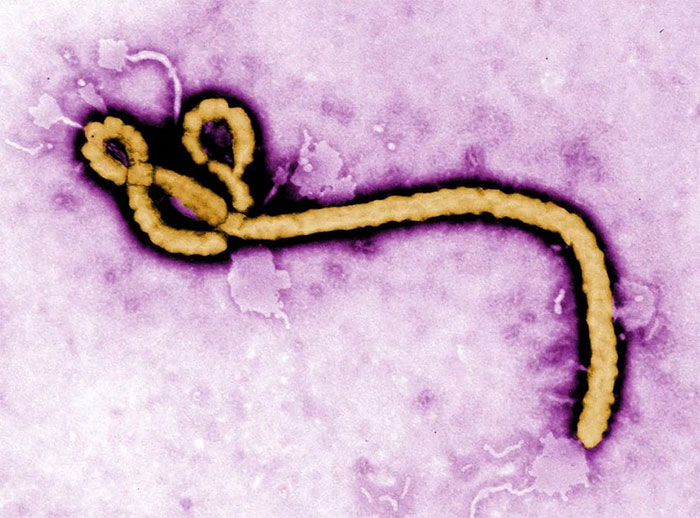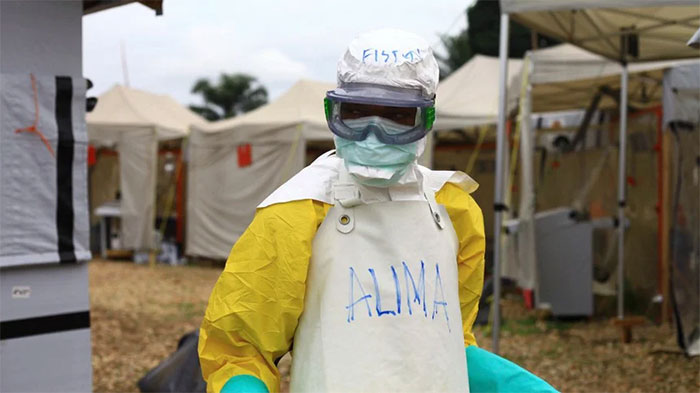Breakthrough research from a team of experts in the United States reveals that the Ebola virus can “hide” in certain parts of the body, such as the cerebrospinal fluid, waiting for a chance to reactivate.
The findings were published in the journal Science Translational Medicine on February 8. This research is highly regarded for providing an important warning about the long-term impact of the mysterious Ebola virus on humanity. This disease poses a life-threatening risk with frequent outbreaks, primarily in Africa, and has an average mortality rate of 50%.
Ebola Virus Hiding in the Brain and Causing Persistent Illness
According to the Independent, some scientists have previously identified cases of persistent Ebola infections. However, the exact hiding places of this deadly virus and the mechanisms that lead to disease reactivation remain a mystery.
The work from researchers at the U.S. Army Medical Research Institute of Infectious Diseases (USAMRIID) has gradually unraveled this mystery. They found that Ebola is a disease that is not easily cured completely, and patients are at risk of relapse, especially those who were treated with monoclonal antibodies.
In the new study, scientists used a disease model in monkeys that exhibited Ebola infection symptoms similar to humans. The results showed that two monkeys who recovered from Ebola after being treated with antibodies experienced a relapse and could not fight off the virus.
Inflammation and a high viral load of Ebola were found in the left brain without any clear clinical symptoms. Other organs also showed signs of viral attack.

Ebola found hiding in the brain, semen, and lens of treated patients, despite their recovery. (Photo: NAIDS).
“We found that about 20% of monkeys that recovered from the monoclonal antibody therapy still had persistent Ebola infections, particularly in the left brain, where cerebrospinal fluid is produced,” said Professor Xiankun (Kevin) Zeng, the lead author of the study.
The expert also emphasized that their research is the first to reveal the hiding place of the dormant Ebola virus, which is the brain. Additionally, these viruses cause mortality in the second infection in non-human primates.
The disease caused by the Ebola virus is the most dangerous infectious disease that humanity faces. Its mortality rate ranges from 25% to 90%, with an average of 50% in previous outbreaks.
Risk of Re-infection with Ebola
Ebola remains a significant threat in Africa after three outbreaks in 2021. This virus is transmitted from humans to wildlife and has spread between people through contact with infected blood and bodily fluids.
Many previous reports have also shown that Ebola reappears in individuals who have recovered. A notable case involved a person who had been vaccinated and treated with antibodies but relapsed and died during the outbreak from 2018 to 2020 in the Democratic Republic of the Congo.
According to the Guardian, experts consider this additional evidence supporting the notion that the Ebola virus can remain hidden for a long time in the body after recovery. Therefore, survivors need to be monitored to protect their health and prevent long-term transmission.
A 25-year-old man, whose identity has not been disclosed, is a resident of the Democratic Republic of the Congo who relapsed with Ebola despite being vaccinated. He first contracted Ebola in December 2018 and was discharged after two negative tests. In November 2019, the patient exhibited symptoms again and was diagnosed with a relapse of Ebola.
The virus can persist in semen for over a year; thus, men are advised to undergo regular check-ups even after recovery. In August 2019, the 25-year-old man tested negative for Ebola in his semen; however, he did not return for regular follow-ups.
Virologist Michael Wiley from the Nebraska Medical Center stated that the individual’s immunity may have waned after six months, or in a worse case, he may never have had immunity to the disease.
Genetic tests revealed that the strain of the Ebola virus that infected this individual was nearly 100% identical to the strain he contracted initially. After relapsing, the male patient transmitted the virus to 29 others, creating a cluster of 91 related cases.

Healthcare workers in protective gear working at an Ebola treatment center in Beni, eastern Congo. (Photo: AP).
Another case involved a British nurse who recovered from Ebola after receiving monoclonal antibody therapy during the 2013-2016 outbreak in West Africa. Subsequently, the female patient relapsed with the virus present in her brain, causing severe neurological disorders for nine months.
In early March 2021, scientists documented that the Ebola virus silently persisted in a patient’s body for up to five years before infecting others. This is the longest duration the virus has been recorded to hide in a human body.
With the current data, experts are increasingly confident in the hypothesis that the Ebola virus can hide for years in specific body regions, such as the lens of the eye, the seminiferous tubules of the testicles, and the left brain. Even when treatment methods are confirmed to have cleared the virus from these organs, they still find ways to “outsmart.”
Co-author of the study, Professor Jun Liu, added: “The persistent Ebola virus can reactivate and cause disease relapse in survivors. This poses a risk of a new outbreak.”
The findings emphasize the need for long-term monitoring of Ebola survivors, including those treated with antibodies, to prevent the risk of relapse.


















































